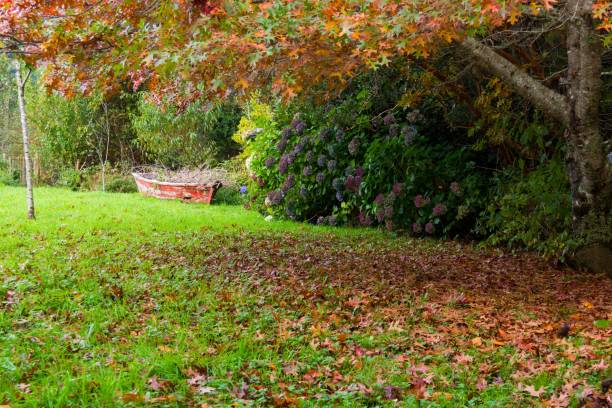How Do You Keep Snow Off the Yard Lines?
This post contains affiliate links. This means I will make a commission at no extra cost to you should you click through and make a purchase. Read the full disclosure here.Snow can be a beautiful sight, but when it comes to maintaining outdoor spaces like sports fields, it can pose significant challenges. One of the critical concerns is keeping the yard lines clear and visible during snowy conditions. In this article, we will explore various techniques used to tackle this issue, ranging from traditional methods to innovative snow removal strategies. By understanding these approaches, we can gain insights into how yard lines are kept snow-free, ensuring safe and well-maintained playing surfaces.
Introduction
When winter arrives, snow-covered yard lines can make it difficult for players, referees, and spectators to navigate a sports field accurately. The loss of visibility poses risks, such as misjudging distances and potential injuries. Addressing this issue requires effective snow removal techniques that maintain the integrity of the yard lines while ensuring player safety. Let’s delve into some of the methods commonly employed to keep snow off the yard lines.
Understanding the Challenges of Snow on Yard Lines
Snow accumulation on yard lines presents several challenges. The primary concern is maintaining the visibility and clarity of the lines. Snow-covered yard lines can lead to confusion, hindering players’ ability to determine their position accurately on the field. Additionally, snow can create an uneven playing surface, affecting the overall game experience and increasing the risk of slips and falls.
Traditional Methods of Snow Removal
1. Manual Shoveling
One of the most common and labor-intensive methods is manual shoveling. Groundskeepers and maintenance crews use shovels to remove the snow layer by layer, carefully avoiding the yard lines. While this method can be effective on smaller fields or in areas with light snowfall, it can be time-consuming and physically demanding.
2. Snowplows and Snow Blowers
For larger sports fields and stadiums, snowplows and snow blowers are often employed. Snowplows clear the snow from the surface, while snow blowers use high-powered air to move the snow to designated areas. While these methods can be efficient, they require skilled operators and careful maneuvering to avoid damaging the field or obscuring the yard lines.
Innovative Techniques for Keeping Snow off Yard Lines
1. Heated Field Systems
One innovative solution involves using heated field systems. These systems are installed beneath the turf or playing surface and utilize a network of heating elements. When activated, these elements raise the temperature of the field, melting the snow and keeping the yard lines visible. Heated field systems are highly effective, but they can be costly to install and maintain.
2. Artificial Turf
Another approach is the use of artificial turf, which eliminates the need for natural grass. Artificial turf is designed with a porous backing that allows for efficient snow drainage. Additionally, some types of artificial turf are treated with anti-freezing agents, preventing snow accumulation. While artificial turf requires a significant initial investment, it offers long-term benefits, such as reduced maintenance and enhanced durability.
3. Field Covers
Field covers are large protective sheets that can be placed over the playing surface during inclement weather, including snowfall. These covers act as a barrier, preventing snow from accumulating on the field and yard lines. Field covers are relatively cost-effective and easy to deploy, making them a popular choice for schools and community fields.
4. Underground Heating Systems
Underground heating systems are similar to heated field systems but utilize heating elements installed beneath the field itself. These systems radiate heat upward, melting the snow and keeping the yard lines clear. While underground heating systems are highly effective, they require significant upfront investment and careful planning during installation.
Benefits and Drawbacks of Different Snow Removal Methods
When evaluating snow removal methods, several factors come into play.
1. Cost Considerations
Traditional methods such as manual shoveling and snowplows are generally more affordable in terms of initial investment. On the other hand, heated field systems, artificial turf, and underground heating systems require a more substantial financial commitment. However, it’s essential to consider long-term savings in maintenance costs and improved field longevity.
2. Environmental Impact
In recent years, there has been an increased focus on environmentally friendly snow removal methods. Traditional methods can contribute to pollution and excessive energy consumption. On the other hand, innovative techniques like heated field systems and artificial turf are more eco-friendly, minimizing the use of chemicals and reducing the carbon footprint.
3. Maintenance Requirements
Different snow removal methods vary in their maintenance requirements. Manual shoveling and snowplows require regular labor-intensive efforts, while heated field systems and artificial turf demand less maintenance. Field covers need occasional cleaning and storage but are generally easy to manage.
Case Studies of Successful Snow Removal Strategies
1. Stadiums and Sports Complexes
Many stadiums and sports complexes have implemented innovative snow removal methods successfully. Heated field systems and artificial turf are commonly utilized to maintain clear yard lines, ensuring optimal playing conditions for athletes and preventing game cancellations.
2. Schools and Community Fields
Schools and community fields often have budget constraints, making cost-effective snow removal methods essential. Field covers are frequently used in these settings, providing a practical solution for keeping yard lines visible during snowfall.
Future Advancements in Snow Removal Technology
The field of snow removal technology is continually evolving. Researchers and engineers are exploring new techniques and materials to further enhance snow removal efficiency. Advancements in heating elements, eco-friendly solutions, and automated systems may shape the future of keeping yard lines clear and safe during snowy conditions.
Conclusion
Maintaining clear and visible yard lines during snowy conditions is crucial for sports fields and outdoor spaces. Traditional methods like manual shoveling and snowplows have been effective but labor-intensive. Innovative techniques such as heated field systems, artificial turf, field covers, and underground heating systems offer more efficient and sustainable options. By carefully considering the benefits and drawbacks of each method, organizations and institutions can make informed decisions on how to keep snow off yard lines effectively.
FAQs
Can heated field systems be installed on existing turf?
Yes, heated field systems can be retrofitted to existing turf. However, the installation process may require specialized expertise and careful consideration of the existing infrastructure.
Are field covers effective in heavy snowfall?
Field covers can be effective in moderate to heavy snowfall. However, extremely heavy snowfall may require additional measures, such as snow removal machinery, to ensure optimal performance.
What are the maintenance requirements for heated field systems?
Heated field systems generally require minimal maintenance. Regular inspections, monitoring of heating elements, and addressing any issues promptly are essential to ensure their continued functionality.
How much does it cost to install an underground heating system?
The cost of installing an underground heating system varies depending on factors such as field size, location, and system complexity. It is recommended to obtain quotes from qualified contractors to determine the specific cost for a particular project.
Are there any environmental concerns with artificial turf?
While artificial turf offers advantages in snow removal, some environmental concerns are associated with its production and end-of-life disposal. It is important to choose eco-friendly options and consider sustainable practices when using artificial turf.













